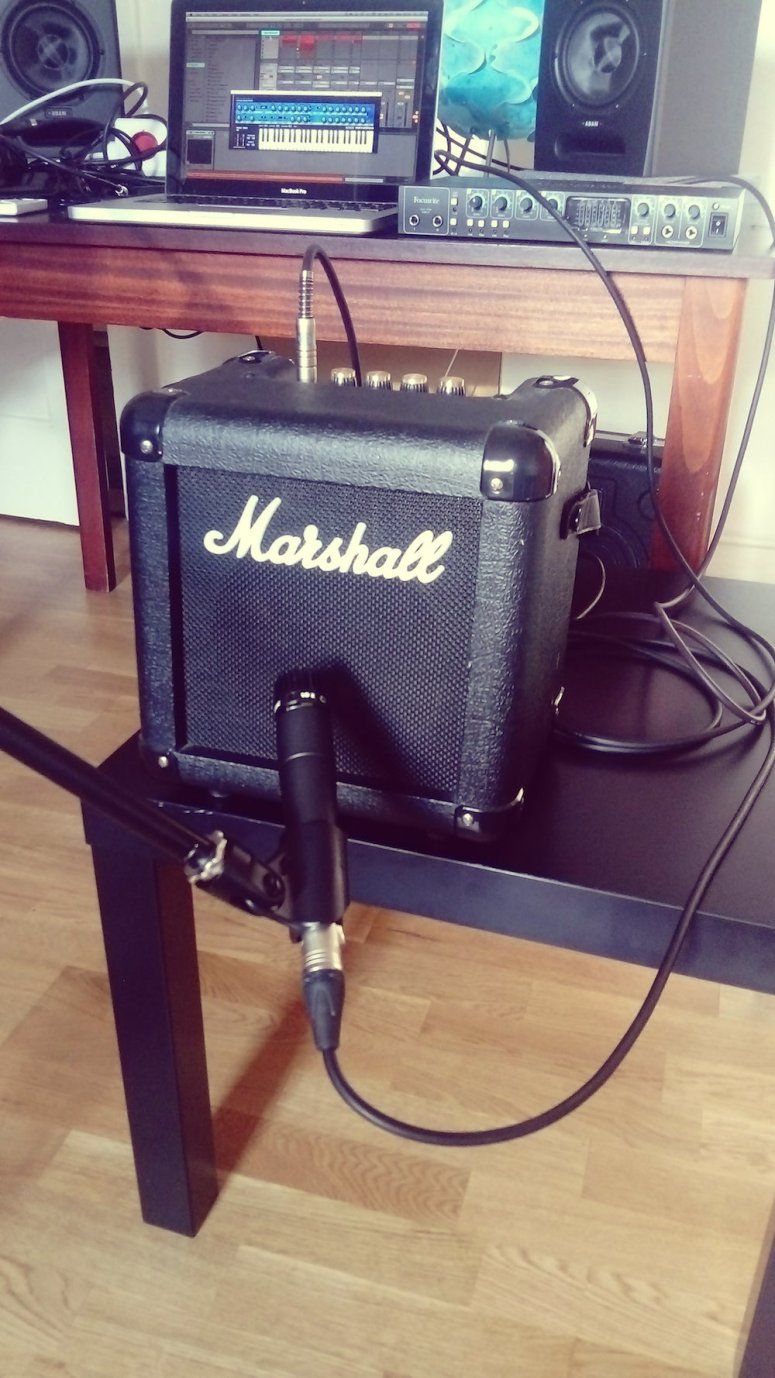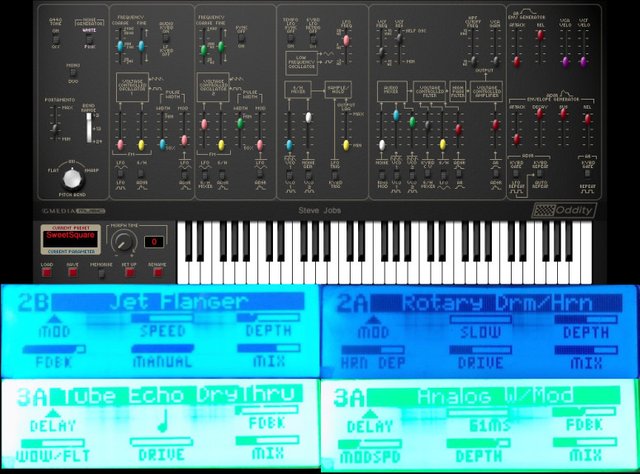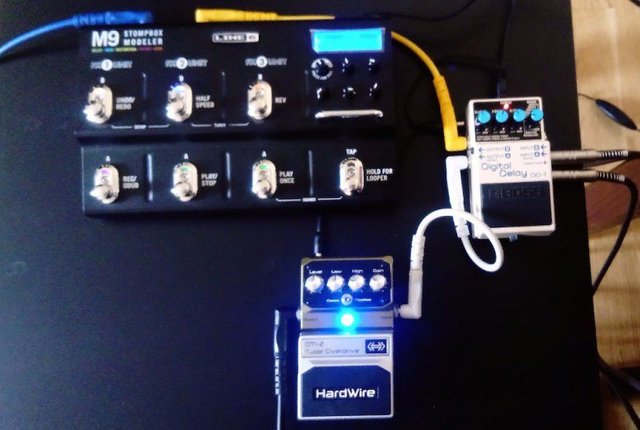Building your tone: make your synth line sound less synthetic and more organic

There’s magic behind a sawtooth oscillator playing a thick bass line. There’s something about that sound and its harmonics that is so appealing. It’s been around since the 40s and it doesn’t seem to retire any soon.
Being software synthesizers so affordable nowadays, anyone can have access to both “classic” and “new” synth sounds, and you can tweak them to create some of your own. The main problem I have with software synthesizers, though, is that sometimes they sound too “synthetic”. You can add some delay, reverb or overdrive distortion but they still have this “plastic” sound. But there’s a secret and it’s called “harmonics”.
Spicing up with harmonics
Harmonics are the watermark of each sound and what makes them unique and distinguishable from one another (along with the envelope). By modifying the harmonic content, you can get a certain character in the sound. You can make it warmer, more metallic, drier, harder, mellower… It’s like seasoning a soup. It can taste better with the right amount of salt on it but you can do a lot more with onion, carrot, celery and garlic. And if you have bay leaves, oregano, thyme, basil, cilantro, parsley… well, you have enough material for making a delicious soup, if you choose to. In the same direction, adding harmonics can make a synth bass line “tastier”.
Some software synths have been modeled very well and have an amazing sound. Some others, unfortunately, are just short of harmonics and sound like toy instruments. That could be just fine if that’s what you are looking for, but even then, adding some harmonics can make it better.
Re-amping
Some producers use re-amping to cope with that, which is to send the signal to a guitar amplifier and record the “re-amped” audio with a microphone, the same way you would do for recording a guitar. It works pretty well and the result is more “analog”. However, even if you set the amplifier to be completely clean with no overdrive or distortion, it still adds this guitar sound that it’s not necessarily what you are looking for.

Image: Re-amping: The audio from the Bass Station plugin is sent to the guitar amplifier and the sound coming out of the cabinet is recorded with a microphone.
Guitar pedals
Taking the same concept of re-amping, I’ve found guitar pedals to be an amazing solution for getting more vivid and rich synth sounds without getting an obvious guitar sound. As a general rule, distortion pedals add more power and robustness, stereo delays make it sound wider and more spacious, and modulation pedals are the ones adding a more diverse harmonic content (depending on the pedal). By combining these different properties, the synth sound can be polished into a more pleasant experience.
Perfection in the imperfection
What I love about guitar pedals is the level of imperfection they can add to the mix. For instance, you can set them to match the track’s tempo, but you don’t have to. A slightly-out-of-synch delay is great as it escapes from the usually-so-perfectly-synched computer beats. Imperfection sounds more human.
The importance of movement
“If you are not evolving, you’re dying”, said a friend of mine once. I always believed that movement is very important in music. Even in repetitive techno beats, producers use high-pass filters for creating a sense of movement and change. String instruments, for instance, let you bend the strings and create a vibrato. You’ll never get bored of a sound that’s constantly evolving.
Another thing I like about using guitar pedals is the ease in which movement can be created. You can easily and constantly change the delay time, the feedback, the dry/wet ratio, the gain, etc. And it’s not necessarily synchronized or perfectly modulated. Sure, you can do the same with a MIDI controller and a software plug-in, and that’s fine. Consider this an add-on to what guitar pedals already bring to the table.
This movement we’re talking about doesn’t have to be very noticeable, though. You may choose to make it aggressive, but just a slight and dynamic change is enough for creating a sense of movement. Quoting Leonardo da Vinci, “simplicity is the ultimate sophistication”¹. If you have ever seen Steve Vai playing his circular vibrato technique during a ballad, you’ll see how soft and gentle is the movement of his hand and yet the effect is very pleasant².
Seasoning
I normally add just a little bit of effect and keep the dry/wet ratio to 70-90% dry³. It’s about seasoning only, we’re not preparing a witch’s potion, although you can add more effect to the signal and get a completely different sound if that’s what you’re looking for.
The following images show a few examples of pedal setups used on software synthesizers.

Image: Top: Oddity, a software synth. Bottom Left: a flanger followed by a delay (the flanger’s tempo is set freely while the echo is fixed to quarter notes). Bottom Right: a rotary speaker followed by a delay (set to 61ms).

Image: Top: Bass Station, a software synth. Bottom Left: a bass octaver followed by a flanger followed by a reverb. Bottom Right: a vocal filter followed by a phaser followed by a delay.
Uneven Parallel Processing
I just made up that name, to be honest. I use this trick when there’s nothing but a synth line to cover all the stereo space.
Here’s how it works:
-The original signal is sent to a stereo delay which time is set anywhere between 30 to 70 milliseconds. Sometimes it’s impossible to determine exactly which delay time I’m using and it does not matter at all (as long as it sounds good and there are no phase issues). Normally at around 60ms, the left and right channels tend to separate and they are perceived as two different signals.
-Each channel is sent to a different mono effect chain. For instance, the left channel can be sent to an overdrive distortion and chorus while the right channel is sent to a filter and rotary speaker. More delay can be added to one channel to spread the signal even more.
-I normally keep the dry/wet ratio to 70-90% dry (unless the effect is not noticeable, in which case I increase the wet ratio).
-The two signals are recorded as a single stereo track in the DAW.
This is similar to a well-known and wide-spread production technique in which, for instance, two guitars are recorded playing exactly the same pattern and with the same processing. One is sent to the very left and the other one to the very right of the stereo field. Because both takes will never be the same, it creates an interesting effect and they sound very wide⁴.
What I like about this technique is how wide it can sound and the fact that each channel has a different sound. Special attention needs to be paid to the phase, though. In case there are phase issues, narrowing the stereo field can help fixing it (for instance, from -100 | +100 to -60 | +60). Using a phase scope can help determining the proper panning.

Image: Parallel Processing: The audio from the software synth is sent to a stereo delay (white stomp box at the right). The left output is sent to an overdrive distortion (at the bottom) while the right output is sent to a series of effects (at the top). Both signals are later combined in a stereo track in the DAW.
Like a master chef
This is just one way to get a more organic sound out of a software synth. There are many more possibilities that will be covered in future articles. In a previous article we talked about the concept of “layering” which can also be applied to this process. In the end, it’s all about “tasting”, i.e. it’s all about listening and slightly adding or taking away here and there. Sometimes only a quick processing is needed. Some other times, like good chocolate, it needs to be ground for 24 hours.
Something new is coming... Stay up to date with Cracking Sound: Subscribe!
Written by Miguel Chambergo (aka Donatien Sade)
Listen to my music
Follow us on Facebook: Cracking Sound
This article was originally published in CrackingSound
————————
1: Original quote: “La semplicità è la massima raffinatezza“
2: Disclaimer: Sometimes he goes crazy with his technique during wild parts, but that’s a different example.
3: Unless the effect is not noticeable, in which case I increase the wet signal.
4: Sometimes only one take is used. In this case, a copy is created and delayed from 30 to 60ms. The result is similar.
*: The piano picture at the top was taken by Ron LiBrand
GREAT POST!
Thanks @pasquale13, I appreciate it.
Take care,
Miguel
welcome!
Why isn't there a link to sounds?
Hi @nutela, thank you for the suggestion/request. I will work on it over the weekend and let you know when the audio files are uploaded.
Take care,
Miguel
Hi @nutela,
I took your suggestion into account and uploaded some audio examples, please find them on my blog: https://crackingsound.com/2017/05/22/building-your-tone-make-your-synth-line-sound-less-synthetic-and-more-organic/
Take care,
Miguel
Wauw! Great, thank you!
Aweomse Post, thanks a lot man, many great tips!!
I work with Korg Volcas and Minilogue and 2 pocket operators, will be having some fun experimenting what sounds I get thanks to this post :D
Ps. check out my steemit blog if you want to hear the kind of music I make. TripHop/Downtempo/Electronic/Psychedelic/Experimental.
Anyway upvoted and subscribed to you!:)